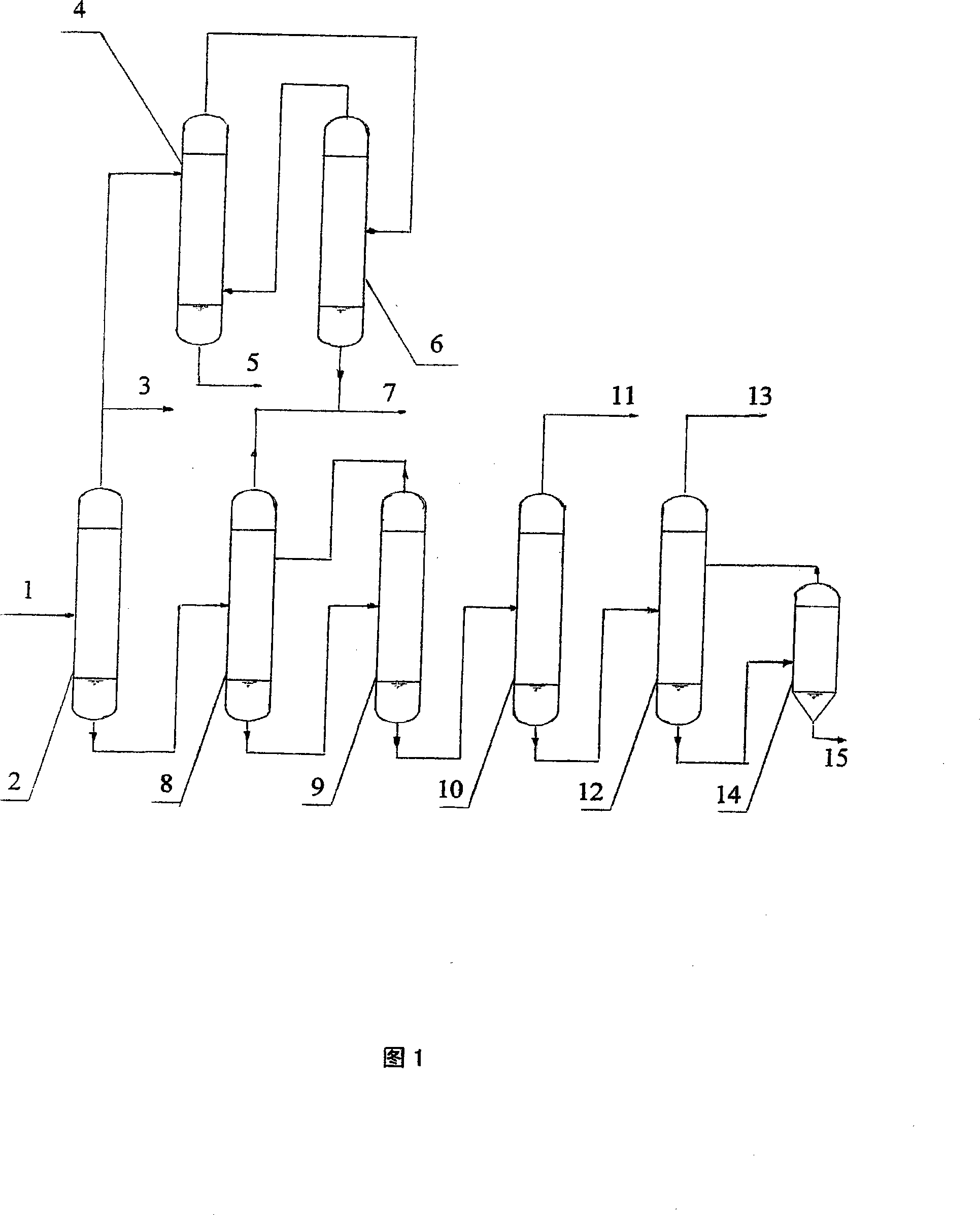Method for separating catechol/hydroquinone from phenol hydroxylation reaction solution
A technology for hydroxylation of phenol and hydroquinone, applied in chemical instruments and methods, preparation of organic compounds, organic chemistry, etc., can solve problems such as high energy consumption, large thermal loss of dihydric phenol, and low separation yield , to achieve the effect of reducing energy consumption, solving the problem of large thermal loss, and reducing the number of theoretical boards
- Summary
- Abstract
- Description
- Claims
- Application Information
AI Technical Summary
Problems solved by technology
Method used
Image
Examples
Embodiment 1
[0034] The mass composition is 37.8% water, 52.8% phenol, 4.5% catechol, 2.7% hydroquinone, 2.2% tar, and the phenol hydroxylation reaction solution is sent to the dehydration tower [2] with a flow rate of 200kg / h, and the dehydration tower [2] Normal pressure operation, reflux ratio 0.2, tower kettle temperature 185~190℃. An aqueous solution [3] with a mass percent content of 10.4% phenol is obtained from the top of the tower, wherein 38 mass percent phenol is sent to the extraction tower [4] to recover phenol, and the rest is recycled to the reaction system for reuse. The output of the dehydration tower [2] is sent to the dephenol main tower [8]. The operating pressure of the dephenol main tower [8] is 5kPa, the reflux ratio is 0.5, and the temperature of the tower kettle is 150-155°C. The output from the bottom of the dephenol main tower [8] is sent to the dephenol sub tower [9]. The operating pressure of the dephenol sub-column [9] is 5kPa, the reflux ratio is 4, and the...
Embodiment 2
[0039] The phenol hydroxylation reaction liquid that mass content is 57.8% water, 32.8% phenol, 4.5% pyrocatechol, 2.7% hydroquinone, 2.2% tar is sent into dehydration tower [2] with 200kg / h, dehydration tower [2] 2] Normal pressure operation, reflux ratio 0.5, tower kettle temperature 185-190°C. An aqueous solution fraction [3] with a mass percentage of 10.0% phenol is obtained from the top of the tower, wherein 38% phenol is sent to the extraction tower [4] to recover phenol, and the rest of the cyclic reaction system is reused.
[0040]The output of the dehydration tower [2] is sent to the dephenol main tower [8]. The operating pressure of the dephenol main tower [8] is 5kPa, the reflux ratio is 0.5, and the temperature of the tower kettle is 150-155°C. The output from the bottom of the dephenol main tower [8] is sent to the dephenol sub tower [9]. The operating pressure of the dephenol sub-column [9] is 5kPa, the reflux ratio is 4, and the temperature of the column botto...
PUM
 Login to View More
Login to View More Abstract
Description
Claims
Application Information
 Login to View More
Login to View More - Generate Ideas
- Intellectual Property
- Life Sciences
- Materials
- Tech Scout
- Unparalleled Data Quality
- Higher Quality Content
- 60% Fewer Hallucinations
Browse by: Latest US Patents, China's latest patents, Technical Efficacy Thesaurus, Application Domain, Technology Topic, Popular Technical Reports.
© 2025 PatSnap. All rights reserved.Legal|Privacy policy|Modern Slavery Act Transparency Statement|Sitemap|About US| Contact US: help@patsnap.com


